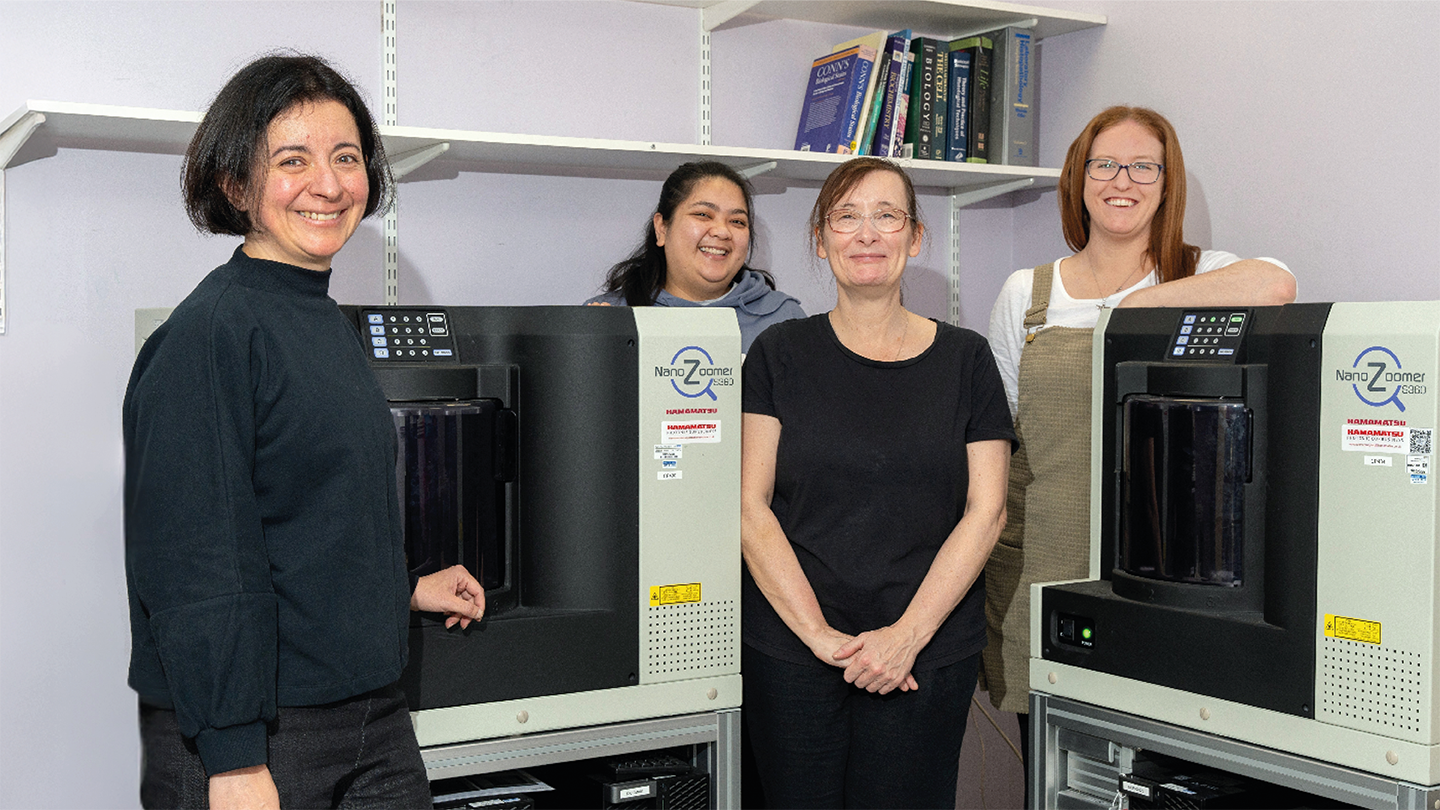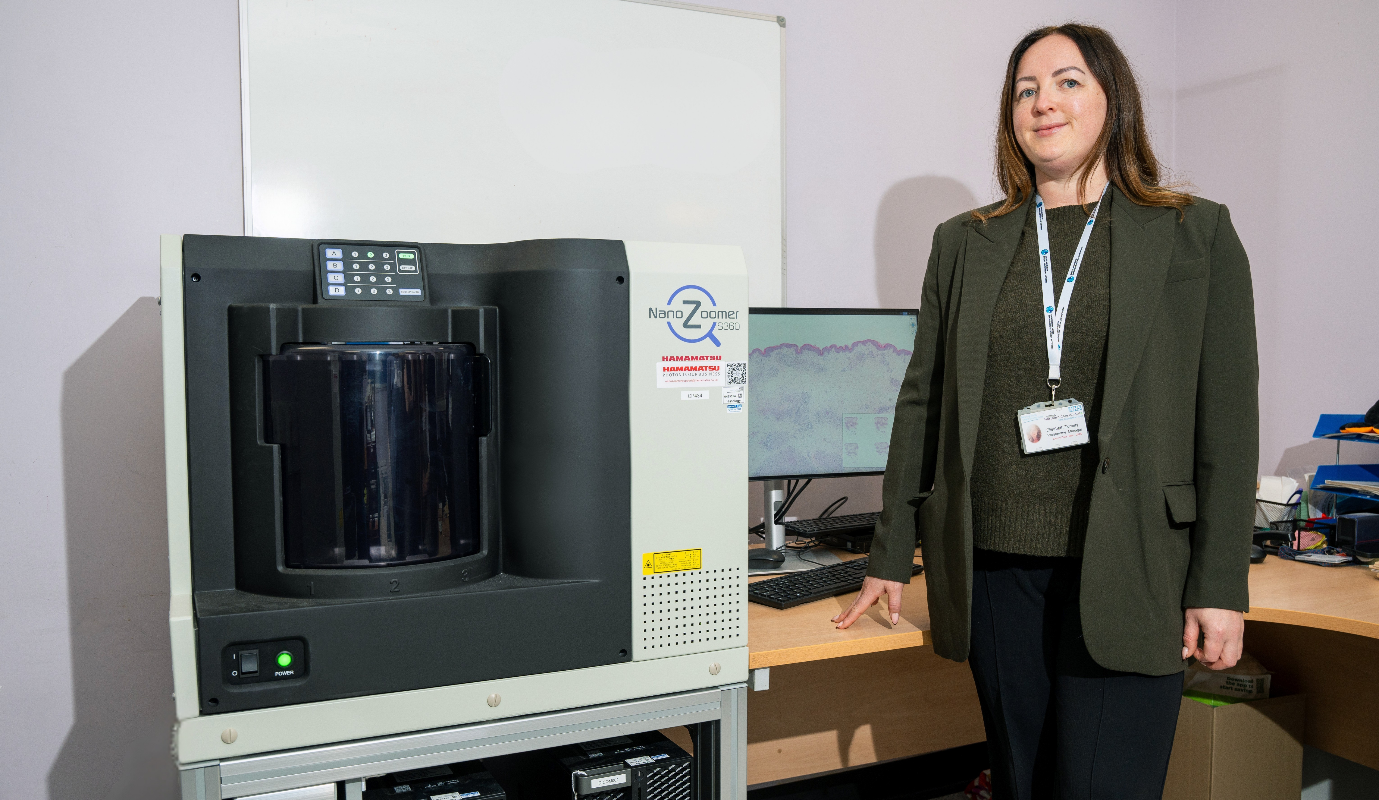
The Greater Manchester Pathology Network is a collaborative pathology network across seven National Health Service (NHS) provider organizations in the North West of England. The network strives to deliver better patient care across various clinical and diagnostic pathways, provide system value, and address health inequalities across the area. A key part of that work is implementing digital pathology to improve diagnostic quality and efficiency.
The long road to digital pathology
Discussions about digital pathology in the Greater Manchester Pathology Network started in 2016 with successful pilot projects. The challenge was that such a large-scale regional project required not only technological updates but also changes to the workflow within the laboratories.
Following a tender process, the network selected a vendor to provide their digital pathology solution, including slide scanners, to support their transition to a digital workflow. After the initial installation of slide scanners across seven laboratories, in March 2022, the program team then focused on improving infrastructure to support the rollout and implementation of digital pathology.
By the end of 2023, additional scanners were purchased and installed to meet the increasing demand. In March 2024, an interactive, hands-on implementation workshop was conducted for staff involved in the rollout. This session facilitated discussions between all sites, allowing lessons learned to be shared and helping to better prepare sites still in the early stages of their digital transition.
To better understand the challenges and wins along the road to digital pathology, I caught up with Luisa Motta, Consultant Histopathologist and Joint Clinical Lead for the Digital Pathology Program in Greater Manchester, and Beth Tumilty, Program Lead for Greater Manchester Diagnostics Network.

How would you summarize the digital pathology rollout in Greater Manchester so far?
Luisa Motta: It has been a complex process, as you might expect. I do think it is extremely positive that the region is approaching this as a team. Collaboration is key to finding the best solutions for our patients.
Beth Tumilty: I agree with Luisa. While implementing digital pathology across seven sites has been challenging, especially with understaffed laboratories and competing digital change programs, it will ultimately help us attract and retain staff.
What obstacles and challenges have you faced during the transition?
LM: Greater Manchester is lacking funding to support 100 percent digitization so there will be a period where consultants are reporting using both traditional and digital methods. Digital pathology does add steps to the workflow in the labs – where resources are already stretched and under significant pressure to adapt to the new workflow changes.
BT: There's also the question of IT infrastructure – will it be able to handle the increased demand from digital pathology? Added to that, we are unable to digitize everything, so there will likely be a hybrid system for some time, which creates its own set of challenges.
What has been the easiest part of this journey so far?
BT: One of the positives has been implementing the scanners in the labs, which has been a smooth and efficient process. The equipment is user-friendly and has integrated seamlessly into our workflow. We are also very excited to start integrating with our laboratory information management system (LIMS) platform soon. We believe this combination will significantly enhance our digital pathology capabilities.
What are the long-term goals for this project?
LM: The ultimate goal is to transform how we work in Greater Manchester. We want to create a more efficient system that provides better service for everyone. This is not just about the technology itself, but about how we use it to improve workflows and patient care.
BT: The long-term goal for this project is to fully implement this solution across all seven cellular pathology laboratories and scale up digital reporting to 54 percent, which is the current capacity within our contract. In time, and with additional funding we would like to increase this to 100 percent, with cross-reporting across organizational boundaries, and to better support multi-disciplinary teams.
We would also like to begin exploring the adoption of artificial intelligence (AI) to support us with reporting turnaround times and some of the time-consuming administration and quality assurance processes. We want to be a trailblazer regionally for the adoption of AI.
What are you most excited about for the future of digital pathology in Greater Manchester?
BT: I am looking forward to seeing the system fully implemented and operational. I want to see how it improves patient care and how we can continue to develop and optimize the system in the future, integrating AI and levelling up our research and development opportunities. Ultimately, we wish to make the Greater Manchester Diagnostics Network an attractive place to work.
LM: Absolutely. But, most importantly, I am excited about the potential for a permanent change in how histopathology operates in the NHS. This could lead to a more sustainable and resilient service for everyone. We also hope to be able to operate as a true Greater Manchester network, sharing images and reports across sites to better support each other and reduce turnaround times.
Looking ahead
The digital pathology rollout across Greater Manchester's seven sites is an ambitious, collaborative effort to transform histopathology services. The successful implementation of slide scanners at Royal Oldham Hospital led to it becoming the first pathology laboratory in Greater Manchester to go live with digital diagnostics for biopsies in 2024. The resulting gains in workflow efficiency will be faster test results and treatment for patients.
Moving forward, the dedicated program team aims to create an efficient regional diagnostic network that optimizes workflows, reduces turnaround times, enables cross-site collaboration, and improves patient care. By integrating scanning systems with our LIMS platform, project leaders are paving the way for more resilient, high-quality pathology services across the NHS.
